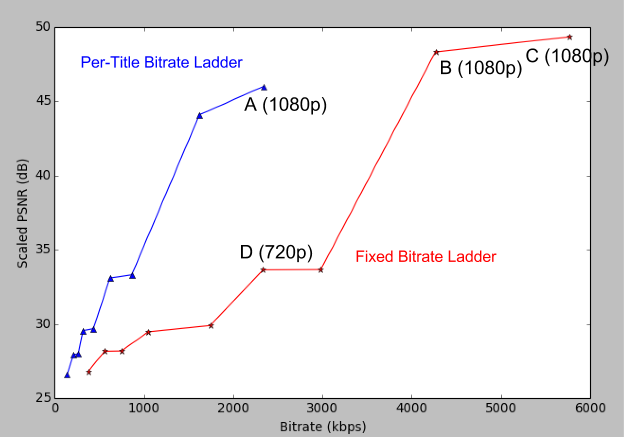Netflix's new video approach looks better, uses less data
After years of research, it's re-encoding the entire video library in a new way.

The last time we noted Netflix extensively discussing how it stores video for the best streaming performance, its HD quality maxed out at 720p, surround sound was still a pipe dream and tablets weren't a thing yet. A Variety report explains that after extensive testing it's going through and re-encoding the entire library with a process that applies compression in a smarter way to maximize quality and save a ton of bandwidth. Soon, when you press play Netflix's servers will do a better job of recognizing what kind of device you're watching on and, depending on the connection speed available, pick a stream that fits its capabilities.

Back in 2010 Netflix's engineers established pairs of video bitrates (the amount of data used each second) and corresponding resolutions. Depending on the speed of the connection available (and what resolution the player can handle) you get the corresponding quality video, and that's that -- a slow connection means low-res SD or worse, while fast connections got the high-res 1080p stream. But after years of streaming untold amounts of video over the internet, the company has figured out that different content handles compression in different ways.

In this cropped and resized image (see Netflix for the originals) you can compare 1080p Bojack compressed the old way (left) and the new way, using a slightly lower bitrate (right).
An animated title like Netflix's own Bojack Horseman, for example, looks good at a far lower bitrate than any typical action movie needs. After it's re-encoded under the new rules, someone with a slower DSL-quality connection might see a 1080p HD version of Bojack instead of the SD they used to,simply because it will still appear high quality and without artifacts. Pick something with live characters, like Orange is the New Black or fast-moving action scenes, and it will serve you something encoded at a lower resolution, but the same bitrate. That way it can max out on the actual quality the viewer sees without causing artifacts or pixelization. In the future, it could even apply the technique per-scene for better quality and more bandwidth saving.
Netflix:
What does this mean for my Netflix shows?
Per-title encoding allows us to deliver higher quality video two ways: Under low-bandwidth conditions, per-title encoding will often give you better video quality as titles with "simple" content, such as BoJack Horseman, will now be streamed at a higher resolution for the same bitrate.
When the available bandwidth is adequate for high bitrate encodes, per-title encoding will often give you even better video quality for complex titles, such as Marvel's Daredevil, because we will encode at a higher maximum bitrate than our current recipe.
Our continuous innovation on this front recognizes the importance of providing an optimal viewing experience for our members while simultaneously using less bandwidth and being better stewards of the Internet.
Ultimately, this won't just benefit the viewers who Netflix says can expect better or the same quality viewing experience over a variety of connections, and devices (for those with high-speed internet and high-res screens, the maximum bitrates are also going up so you'll be better off too). The new scheme could use up to 20 percent less bandwidth than existing techniques, which is massive considering how much data Netflix is using at any given moment -- the most recent stats show it accounts for 37 percent of North America's downstream traffic at peak times.
Beyond net neutrality squabbles with ISPs in North America and Europe, the company's plans for worldwide domination streaming mean that soon it will rely heavily on last-mile connections in countries that don't have the same level of broadband rolled out everywhere. At the same time, it's adding more and more video in 4K and even HDR quality with higher bandwidth requirements, so it needs to save where it can.
Netflix told Variety that it started adding video encoded the new way earlier this month, and it expects to have a thousand titles done by the holidays, starting with its most popular content. The whole catalog should be done early next year, and then we can truly judge if it's living up to the promises. Netflix is using Amazon's servers not only to compress all these new versions of each video, but also to run an automated process that inspects each version and uses machine learning to catch glitches. As we saw when it ditched the old "X-high" standard a few years ago, it will be up to viewers to tell (or, hopefully not tell) the difference.

